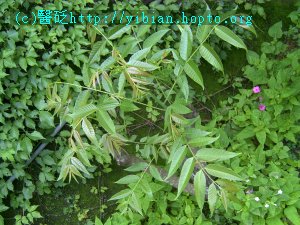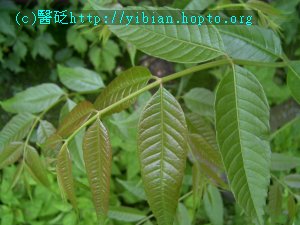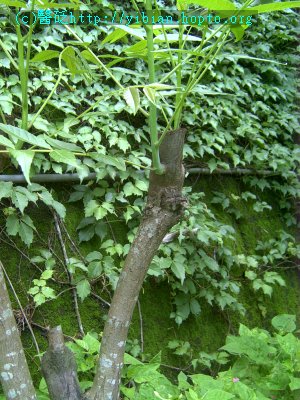| common name | Chinese Mahogany Xiang Chun |
| family | Meliaceae |
This product is the tender buds and leaves of the Chinese mahogany (Toona sinensis (A.Juss.) Roem.), a plant of the Meliaceae family, grown in spring.
bubble_chart Morphological Characteristics



bubble_chart Properties and Meridians
Cool, bitter neutral; act on lung, stomach and large intestine meridians. Yiyun is bitter and astrigent, warm.
Clearing heat and removing toxins, strengthening the stomach and regulating qi, moisturizing the skin, improving vision, and killing parasites.
It is mainly used to treat sores and ulcers, alopecia areata, red eyes, and lung heat cough.
- It dries dampness, clears heat, and astringes to consolidate, used for chronic diarrhea, prolonged dysentery, hemorrhoids with bloody stool, menorrhagia, metrostaxis, and leukorrhea.
- It has antibacterial and anti-inflammatory effects, kills parasites, and is used to treat ascariasis, sores, ringworm, scabies, and other skin diseases.
- Shiliao Bencao: "For women with menorrhagia and postpartum bleeding that does not stop, excessive menstruation, it also stops leukorrhea, and treats infantile malnutrition and dysentery."
- 《Da Ming Materia Medica》: "Stops women's menorrhagia, postpartum bleeding that does not stop, reddish leukorrhea, bloody defecation that does not cease, intestinal slippage and diarrhea, reduces urination."
- Bencao Gangmu: "For white baldness that does not grow hair, take the heart of the leaves of the Chinese toon, peach, and catalpa, pound them to extract the juice, and apply frequently."
- Yilin Zuanyao Tanyuan: "Drains lung inversion, dries spleen dampness, removes blood dampness stroke heat. Treats diarrhea, dysentery, bloody defecation, flooding and spotting, and frequent red urination."
bubble_chart Cautions and Contraindications
Shiliao Bencao records, "Consuming too much Toona sinensis buds can stir the wind, affect the ten Jingmai and the five zang-organs, leading to unconsciousness and weakening of blood and qi. If frequently consumed with pork and hot noodles, it can cause fullness in the middle, as it blocks the meridians." Therefore, it should not be consumed in excess.
bubble_chart Modern Pharmacology
Chinese mahogany decoction has a strong inhibitory effect on Staphylococcus aureus, pneumococcus, cold-damage disease bacillus, type A paracold-damage disease bacillus, Pseudomonas aeruginosa, and Flexner's dysentery bacillus.
Per 100 grams of Chinese mahogany contains 9.8 grams of protein (ranking first among vegetables), 143 milligrams of calcium, 115 milligrams of vitamin C (second only to hot pepper), 135 milligrams of phosphorus, 1.36 milligrams of carotene, 1.50 milligrams of riboflavin, 4.5 milligrams of iron, and 1.56 grams of crude fiber.
bubble_chart Modern Application
- Treatment of bacterial dysentery. Some people used Chinese mahogany liquid extract to treat 20 cases of acute bacterial dysentery. Method: Prepare a liquid extract containing 160g of fresh raw material (leaves and tender branches) per 10ml, take 20-30ml each time, 2-3 times a day, with reduced dosage for children. Results: 17 cases were cured, with an efficacy rate of 85%. A few people experienced nausea and other side effects after taking the medication. The efficacy was superior to the control groups treated with chloramphenicol and furazolidone (20 cases with an efficacy rate of 75%). Others have also used it to treat dysentery, enteritis, and infections caused by pyogenic cocci.
- Treatment of cervicitis and urethritis. The method involves decocting or consuming fresh tender buds and leaves of Chinese mahogany, 150g of fresh material each time.
- Treatment of acute and chronic otitis media. Some people used Chinese mahogany bark ear drops to treat 40 cases of acute and chronic otitis media, all of which were cured. Ingredients: 60g of Chinese mahogany bark, an appropriate amount of sesame oil. Preparation: Roast the Chinese mahogany bark on a tile until it turns into charcoal, grind it into a very fine powder, and store it in a clean glass bottle. Then add an appropriate amount of sesame oil and mix well for use. Usage: First, rinse the pus in the ear with hydrogen peroxide, then dry it with a cotton ball. Use a small dropper to draw the medicinal oil and drop 2-3 drops into the ear. After dropping, gently press the ear to guide the medicinal liquid into the middle ear, let it stay for about 20 minutes, then pour it out. Repeat 5-6 times a day. Chronic patients can be cured in about 7-10 days, while acute patients can be cured in about 1-3 days.
- Others: Some people have also used Chinese mahogany seeds to treat headache, migraine, chest pain, wind-dampness arthralgia, hernia pain, wind-cold external contraction, hemorrhoid fistula disease, etc. They used Chinese mahogany leaves to treat red and white dysentery, boils and sores on the lips, white baldness on children's heads, lacquer sores, and used Tree-of-Heaven Bark to treat dysentery, gonorrhea, leucorrhea, abdominal stuffiness, gastric ulcer bleeding, gastric and duodenal ulcers, etc.





